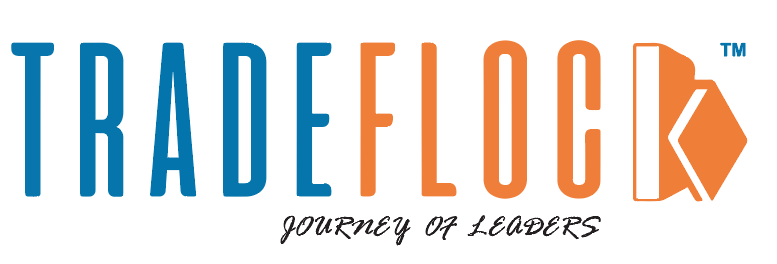How long is it gonna take?
Why is my loan not being approved?
….
These are some of the questions that American citizens have asked at least once in their lifetime while securing a loan from the bank. Sometimes, you might even face discrimination by loan officials based on race, gender, and more. What can be the best solution for this? Well, peer-to-peer lending is the answer to all of these problems. It is an upcoming fintech that is widely considered the silent killer of the conventional finance industry. P2P lending is now becoming a widely used option by owners of small businesses for securing low-cost loans. Keep on reading the blog to discover whether P2P lending is a goldmine or a landmine ready to explode. Further, we will also discuss the best peer-to-peer lending platforms you can use for borrowing or lending.
Table of Contents
What Is Peer-To-Peer Lending?
Peer-to-peer lending is a way of lending and borrowing among individuals without the intervention of financial intermediaries like banks. Consider it like eBay, which brought an online shopping experience and eliminated the requirement of intermediaries; Peer-to-Peer platforms do the same. In a decentralized space, it connects the potential lender with the borrower and promotes a healthy market for personal and small business loans. It sounds progressive and efficient, but how does it work? Is it safe? These are some genuine concerns that we will discuss in the following sections.
Working Mechanics Of Peer-To-Peer Lending?
Peer-to-peer lending has completely changed the way financial system operates with its innovative operations. Never before has lending and borrowing been this transparent and affordable. Let’s examine the mechanisms of Peer-to-Peer lending.
- Online Platform: There are P2P lending platforms like Prosper, LendingClub, Funding Circle, etc., that work as a broker for peer-to-peer lending.
- Borrower Application: After registering on the above-mentioned platforms, borrowers file a loan application on the platform. The application will ask for personal data, the requested loan amount, justification of the loan, and the user’s credit history.
- Credit Evaluation: Once the application is successfully submitted, it is sent to evaluate the borrower’s creditworthiness. Credit reports, bank accounts, and other key data are examined to determine the risk profile.
- Loan Listings: Like on eBay, products are displayed to buyers similarly after authorization. Loans are shown to potential lenders to review and lend money.
- Lender Participation: Lenders who are interested in your profile and are ready to bear risk fund the loans.
- Platform fees: Most peer-to-peer lending platforms charge fees as a percentage of the loan amount, but this cost varies from platform to platform.
Is It Good For Lenders?
Well, there is no straightforward answer to this. It depends on the amount of risk you are ready to bear. There are both potential pros and cons of peer-to-peer lending, and if you are fine with the risks associated with this blockchain technology, then it is a lending platform that can give you a high return. Let’s now delve into it:
Pros:
- Low Entry Barrier: P2P investing is highly affordable, allowing you to start with minimal capital.
- Better Yields: Peer-to-peer lending offers attractive returns. With a well-chosen portfolio, you can earn 10% or more annually.
- IRA Friendliness: Many platforms support setting up traditional IRAs, Roth IRAs, or 401(k) rollovers, enabling tax-advantaged gains.
Cons:
- Potential Defaults: Unsecured loans, which form the majority of P2P loans, lack collateral. If a borrower defaults, especially early on, your investment is lost.
- Lack of FDIC Protection: The Federal Deposit Insurance Corporation does not cover peer-to-peer lending platforms. If the platform or borrower fails, your investment is not protected.
- Capital Depletion: Recovering funds from delinquent loans is often difficult and time-consuming, potentially depleting your invested capital.
Should I Use It For Borrowing?
According to us, you should borrow some of your loans from these peer-to-peer lending platforms. This will allow you to explore the downsides and benefits of both conventional finance and modern financial solutions and the best for yourself. Let’s discuss some of the drawbacks and benefits below:
Benefits:
- The lower cost is associated with loans as compared to traditional methods.
- If you have a bad loan track record but a sympathetic story behind your struggles, you might be able to secure the loan.
- You can actively participate in the debates on the policy changes incorporated in peer-to-peer lending.
Drawbacks
- If your credit score is good, your application will be accepted.
- It may take more time than traditional methods if the loans are being funded through auction.
- Peer-to-peer lending is often less regulated than traditional banking, which can pose risks in terms of borrower protection.
Is Peer-to-peer Lending a Boon or Curse?
Peer-to-peer lending can be both a boon and a curse. Bypassing traditional banks, it offers borrowers easier access to loans and potentially lower interest rates. This democratizes finance and can spur economic growth. However, it also carries risks: Lack of regulatory oversight may expose investors to fraud or default risks and borrowers to high interest rates. Thus, while P2P lending fosters financial inclusion and innovation, careful regulation and due diligence are crucial to mitigate risks and ensure its sustainable benefits.
Peer-to-peer lending is an evolving technology and is in a very nascent stage. We will advise that you carefully review the P2P lending platform policy before signing up for the platform and also carefully determine how many portfolios you are comfortable allocating. For more such informational blogs and current affairs, stay tuned with TradeFlock and follow us on social media platforms to stay updated about our latest offerings.





